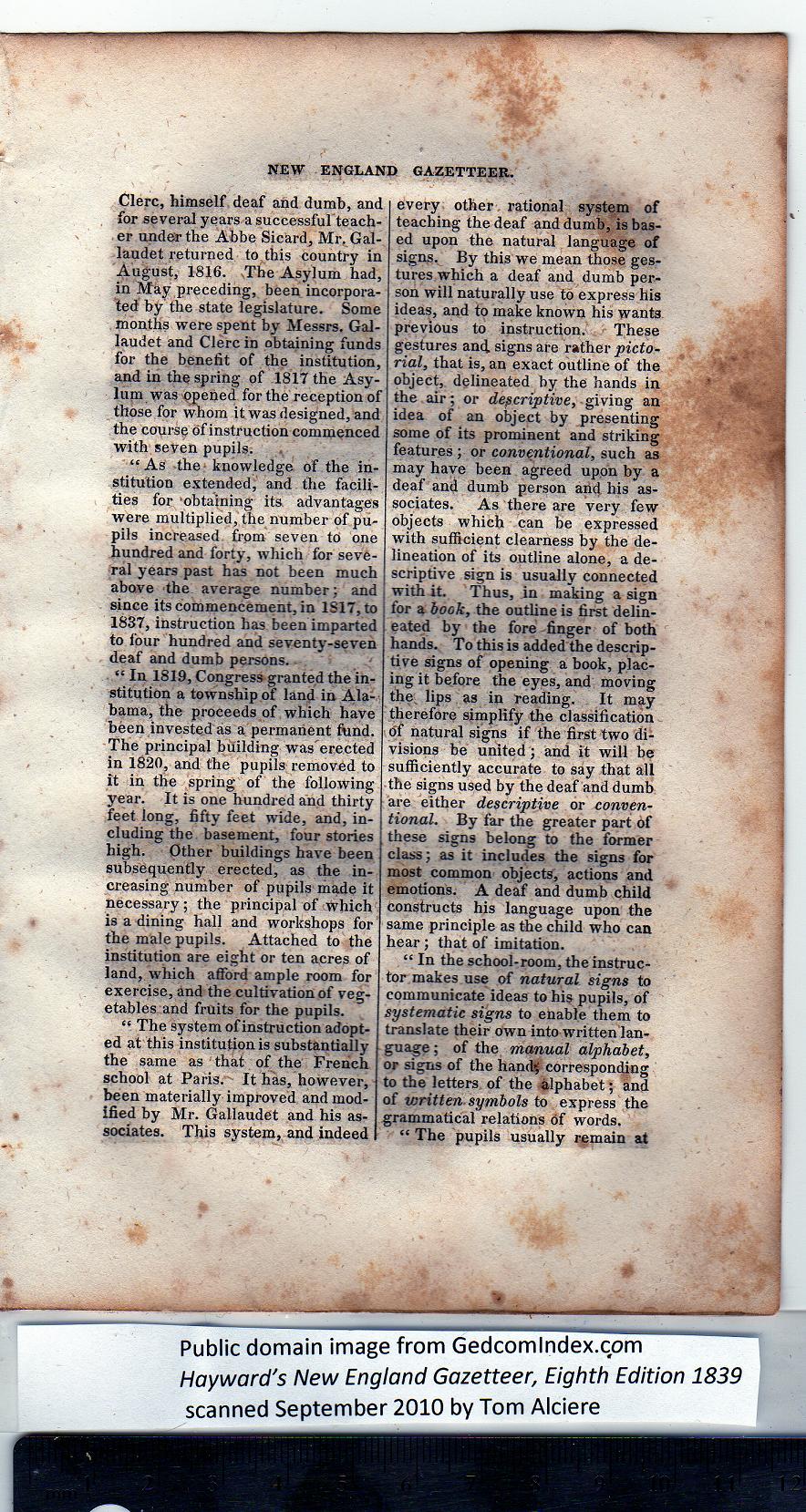|
Clerc, himself deaf and dumb, and
for several years a successful teach-
er under the Abbe Sicard, Mr. Gal-
laudet returned to this country in
August, 1816. The Asylum had,
in May preceding, been incorpora-
ted by the state legislature. Some
months were spent by Messrs. Gal-
laudet and Clerc iD obtaining funds
for the benefit of the institution,
and in the spring of 1817 the Asy-
lum was opened for the reception of
those for whom it was designed, and
the course of instruction commenced
with seven pupils.
“As the - knowledge of the in-
stitution extended, and the facili-
ties for ‘obtaining its advantages
were multiplied, the number of pu-
pils increased from seven to one
hundred and forty, which for seve-
ral years past has not been much
above the average number; and
since its commencement, in lS17,to
1837, instruction has been imparted
to four hundred and seventy-seven
deaf and dumb persons.
“ In 1819, Congress granted the in-
stitution a township of land in Ala-
bama, the proceeds of which have
been invested as a permanent fund.
The principal building was erected
in 1820, and the pupils removed to
it in the spring of the following
year. It is one hundred and thirty
feet long, fifty feet wide, and, in-
cluding the basement, four stories
high. Other buildings have been
subsequently erected, as the in-
creasing number of pupils made it
necessary; the principal of which
is a dining hall and workshops for
the male pupils. Attached to the
institution are eight or ten acres of
land, which afford ample room for
exercise, and the cultivation of veg-
etables and fruits for the pupils. |
“ The system of instruction adopt-
ed at this institution is substantially
the same as that of the French
school at Paris. It has, however,
been materially improved and mod-
ified by Mr. Gallaudet and his as-
sociates. This system, and indeed
every other rational system of
teaching the deaf and dumb, is bas-
ed upon the natural language of
signs. By this we mean those ges-
tures which a deaf and dumb per-
son will naturally use to express his
ideas, and to make known his wants
previous to instruction. These
gestures and signs are rather picto-
rial, that is, an exact outline of the
object, delineated by the hands in
the air; or descriptive, giving an
idea of an object by presenting
some of its prominent and striking
features; or conventional, such as
may have been agreed upon by a
deaf and dumb person and his as-
sociates. As there are very few
objects which can be expressed
with sufficient clearness by the de-
lineation of its outline alone, a de-
scriptive sign is usually connected
with it. Thus, in making a sign
for a book, the outline is first delin-
eated by the fore finger of both
hands. To this is added the descrip-
tive signs of opening a book, plac-
ing it before the eyes, and moving
the lips as in reading. It may
therefore simplify the classification
of natural signs if the first two di-
visions be united; and it will be
sufficiently accurate to say that all
the signs used by the deaf and dumb
are either descriptive or conven-
tional. By far the greater part of
these signs belong to the former
class; as it includes the signs for
most common objects, actions and
emotions. A deaf and dumb child
constructs his language upon the
same principle as the child who can
hear; that of imitation.
“ In the school-room, the instruc-
tor makes use of natural signs to
communicate ideas to his pupils, of
systematic signs to enable them to
translate their own into written lan-
guage ; of the manual alphabet,
or signs of the hand# corresponding
to the letters of the Alphabet; and
of written symbols to express the
grammatical relations of words.
“ The pupils usually remain at |
